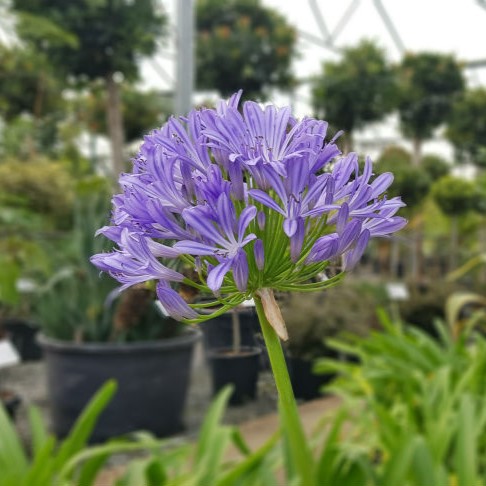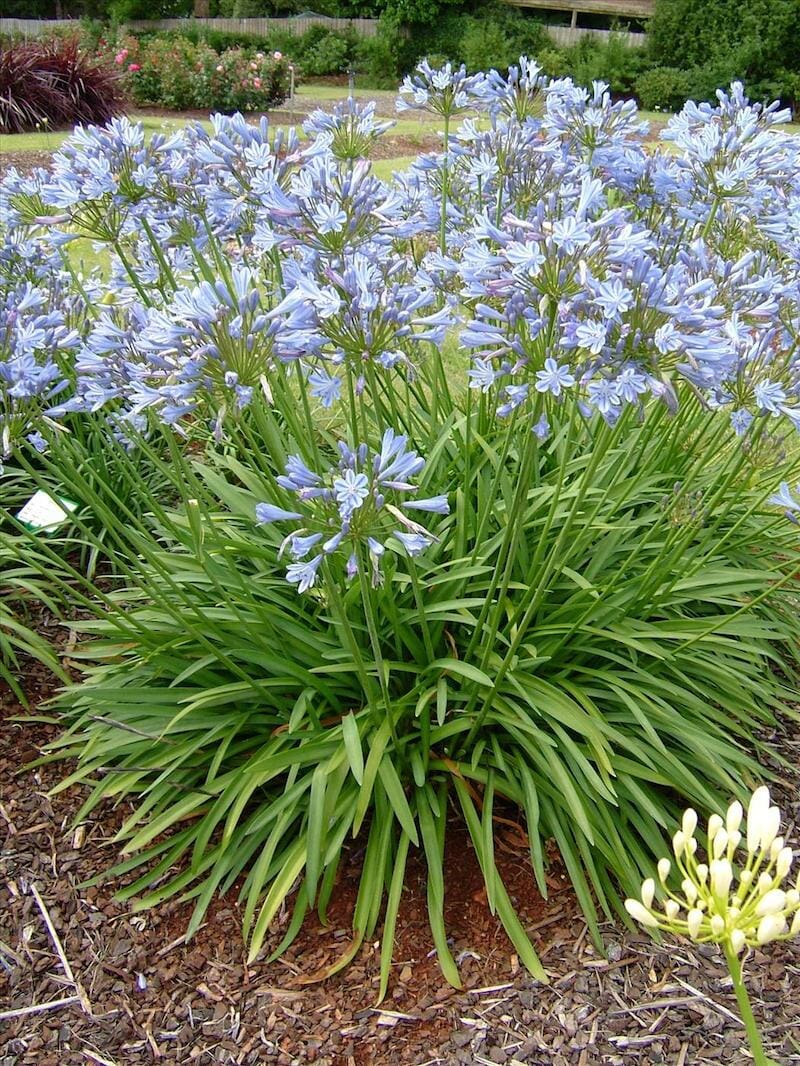Releasing the Secret to Successful Agapanthus Farming: Advice for a Flourishing Yard
In the world of gardening, growing agapanthus successfully calls for a calculated approach that incorporates different facets of plant treatment. With careful interest to detail, one can open the secrets to supporting these stunning flowers, leading to a garden that flourishes with elegance and vibrancy. By comprehending the nuances of agapanthus cultivation, one can develop an atmosphere where these plants prosper and bloom generously. In the adhering to discussion, we will certainly explore necessary tips and techniques that will assist you towards a growing agapanthus yard, using insights into ideal methods, dirt problems, watering methods, and extra.
Planting Agapanthus: Finest Practices
When growing Agapanthus, correct soil prep work is important for making certain successful growth and development of these lovely flowers. Agapanthus, generally recognized as Lily of the Nile or African lily, prospers in well-draining dirt with a slightly acidic to neutral pH degree - Agapanthus. Before growing, it is important to modify heavy clay dirts with raw material such as garden compost or peat moss to boost drainage and offer necessary nutrients for the plants
To grow Agapanthus, pick an area that obtains complete sunshine to partial color, as this will promote healthy growth and abundant flowering. Dig an opening two times the size of the plant's origin sphere and put the Agapanthus at the exact same depth it was previously growing. Gently backfill the opening with dirt, pushing down securely to eliminate any type of air pockets around the roots.
Water the newly grown Agapanthus extensively and proceed to keep the soil evenly wet, specifically throughout the plant's active growing period. Agapanthus. Using a balanced plant food once a month can additionally support the plant's growth and blooming. By adhering to these finest methods for planting Agapanthus, you can develop a magnificent display screen of these fascinating flowers in your garden
Ideal Dirt Conditions for Agapanthus
For ideal growth and blooming success of Agapanthus plants, making sure the soil problems are ideal is essential. Agapanthus likes dirt that is rich in nutrients, so incorporating a well balanced fertilizer throughout the growing period can promote healthy growth and vibrant blossoms.

Watering and Fertilizing Tips
To guarantee healthy development and vibrant blooms, proper watering and fertilizing strategies are necessary for successful Agapanthus cultivation. Agapanthus plants take advantage of routine watering, particularly throughout the expanding period. great post to read It is advised Continue to water deeply once a week, making sure the dirt is wet but not soaked. Throughout heat or in pots, more constant watering may be needed to avoid the soil from drying entirely.
When it involves feeding Agapanthus, a well balanced plant food with equivalent components nitrogen, phosphorus, and potassium can be applied in the springtime to advertise healthy development and blooming. Slow-release fertilizers are optimal for supplying nutrients progressively over an extensive period. Prevent over-fertilizing, as this can bring about too much foliage development at the expenditure of blooms.
Furthermore, integrating raw material like compost right into the dirt can improve nutrient degrees and enhance soil framework, aiding in the general health of the Agapanthus plants. By complying with these watering and feeding suggestions, garden enthusiasts can ensure their Agapanthus plants grow and produce magnificent display screens of flowers.
Trimming and Deadheading Techniques
Appropriate trimming and deadheading techniques play a vital role in preserving the health and wellness and visual appeals of Agapanthus plants, enhancing the essential methods of watering and feeding for successful farming. Trimming Agapanthus involves eliminating invested blossom heads, yellowing or dead leaves, and general shaping of the plant to advertise far better growth. Deadheading, the process of eliminating discolored blossoms, not just enhances the plant's appearance but likewise urges further blooming.
When deadheading Agapanthus, it is a good idea to clip off the blossom stem at the base utilizing sharp, tidy shears. investigate this site This process reroutes the plant's power from seed manufacturing back into origin and foliage development, promoting a much healthier and more durable plant. Normal deadheading can extend the growing period of Agapanthus and avoid self-seeding, which can cause overcrowding.
In terms of pruning, Agapanthus typically take advantage of a light trim after flowering to clean up the plant and encourage fresh growth. Reducing back the spent blossom stems and eliminating any type of dead or broken foliage helps preserve the plant's vigor and total look. However, it is vital to avoid cutting into the crown of the plant, as this can damage its wellness.

Protecting Agapanthus From Vermins and Diseases
Implementing effective bug and condition monitoring methods is essential to protecting the health and vigor of Agapanthus plants in cultivation. One usual insect that affects Agapanthus is the Agapanthus borer, a caterpillar that tunnels into the plant, causing damage to the blossoms and leaves.
In enhancement to pests, Agapanthus are at risk to conditions such as origin rot and fungal leaf spots. By staying vigilant and addressing bug and disease problems without delay, gardeners can assist their Agapanthus prosper and prosper.

Verdict
In conclusion, effective cultivation of agapanthus needs correct growing strategies, ideal soil conditions, ample watering and feeding, regular trimming and deadheading, and protection from diseases and pests. By following these ideas and methods, gardeners can ensure a prospering yard full of stunning agapanthus blooms. Agapanthus. Keep in mind to preserve constant treatment and interest to detail to promote the health and long life of these spectacular plants
When planting Agapanthus, appropriate dirt prep work is important for ensuring successful development and development of these gorgeous blossoms.Water the freshly planted Agapanthus thoroughly and proceed to maintain the soil evenly wet, especially during the plant's active growing season.For optimum growth and growing success of Agapanthus plants, making sure the soil conditions are optimal is vital. When planting or hair transplanting Agapanthus, ensure the dirt is well-prepared to offer the necessary foundation for the plants to develop themselves successfully. One usual insect that impacts Agapanthus is the Agapanthus borer, a caterpillar that tunnels into the plant, creating damages to the flowers and leaves.